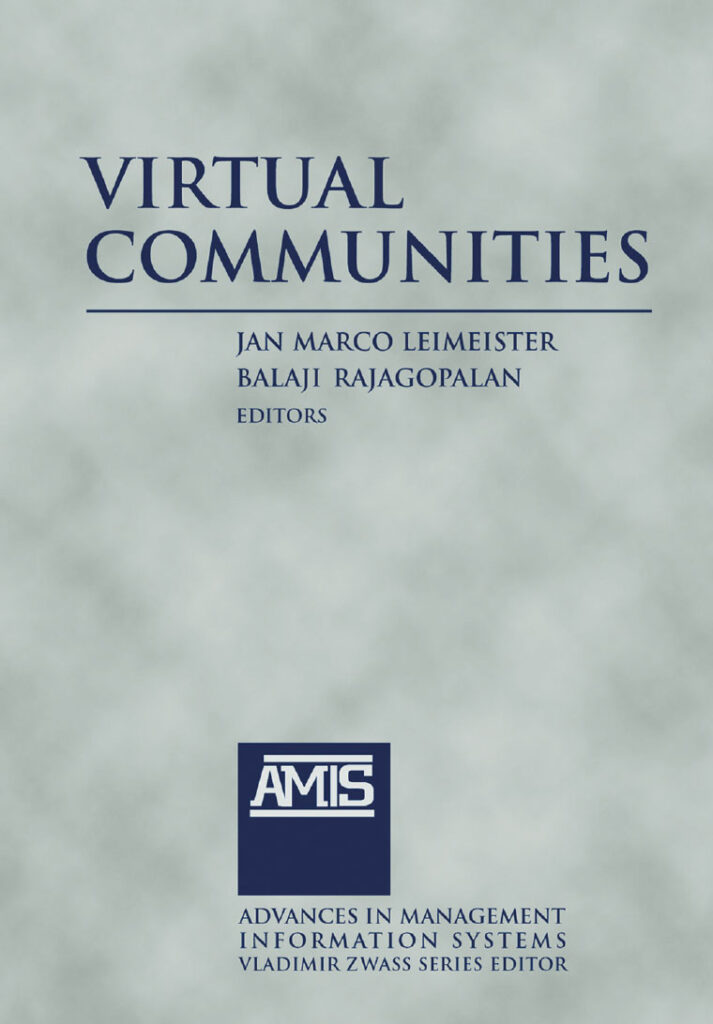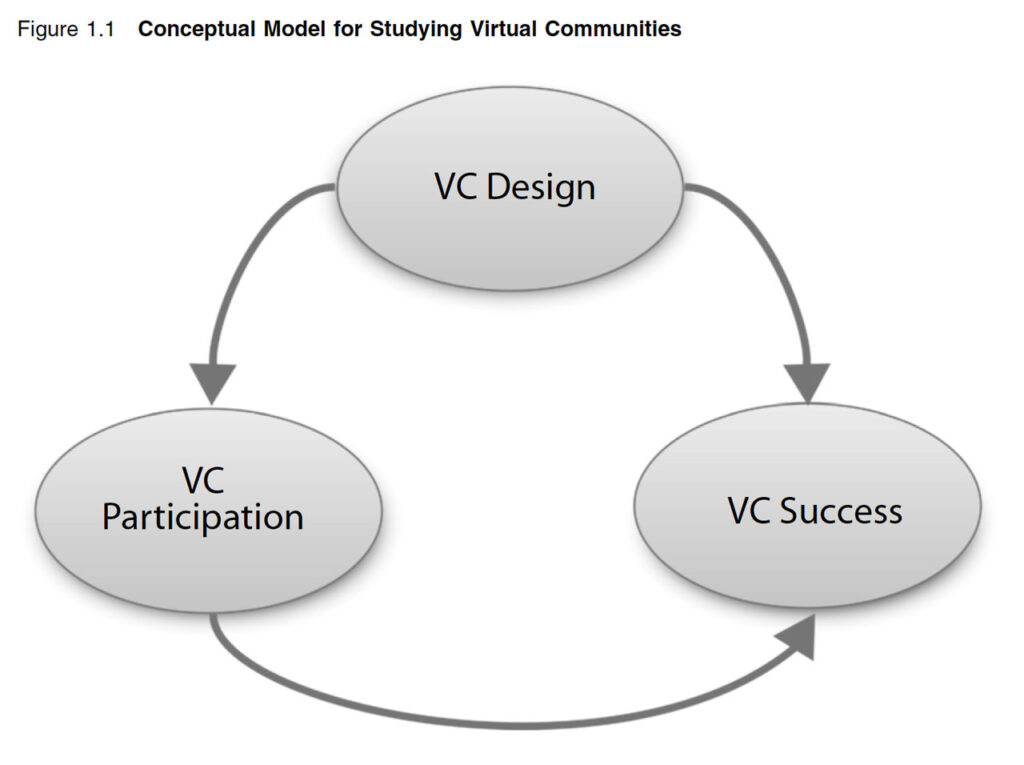

Leimeister, J., Balaji, R. (2014). Virtual Communities: 2014. New York: Routledge, https://doi-org.myaccess.library.utoronto.ca/10.4324/9781315698359
Part 1: Fundamentals of Virtual Communities (Leimeister, Rajagopalan)
Introduction
April 22, 2020
- Virtual communities (VC) grew with the emergence of the World Wide Web
- VC = online community
- Every discipline has their own studies of VCs used in their disciplinary practices
- VC = “computer-mediated spaces where there is a potential for an integration of content and communication with an emphasis on member-generated content”
- VCs consist of:
- People (community)
- Shared purpose (domain)
- Policies (practice)
- Computer systems (not in traditional CoP texts)
- Online social networks = format of VC
- Ubiquitous access to community when it’s online
- Supports socialization and identity
- Members have a sense of community (SoC) in VCs
- Sense of community = concept not in traditional CoPs?; it’s like a layer within membership
Problem Situations and Target Groups that VCs Address
- Success of social networks = growing importance of VCs; there is a need to improve VC design and study how people behave in VCs
- Success is determined by people’s contributions
- Opportunities for research in this field:
- Relationships between different motivations
- Usage and success of VCs for different stakeholders
- Differences in user motivation across cultures
Design of Virtual Communities
- VC space should provide features for a specific audience and allow scalability
- Ex. FB has specific features for subgroups
- There can be features for: young/cold, active/lurkers, new/experienced, long term / short term, etc.
- “Wisdom of the crowds”
- Tighter methods of communication benefit users and the VCs
- Contributors with the most expertise tend to lack technical proficiency in using VCs, so VCs need to be easy-to-use
Deployment and Use of VCs
- There is no formal management of practice in VCs
- Management of VCs are often kept hidden as it is not of interest to users
- “VC operator” = community coordinator
- Each VC has its own way of managing; this is something to explore for any UX VCs I identify in my research
Evaluation of Virtual Communities
- There is no one way to measure success—success of VC depends on the context
- Conceptual model for studying VCs:

- This conceptual model’s arrows ask how does x influence y?
- In order to understand KM of UX designers, it will be good hear in their own words how a VC is designed, and how they see themselves as a (contributing or lurking) member
